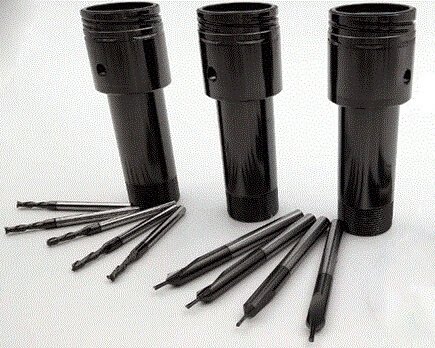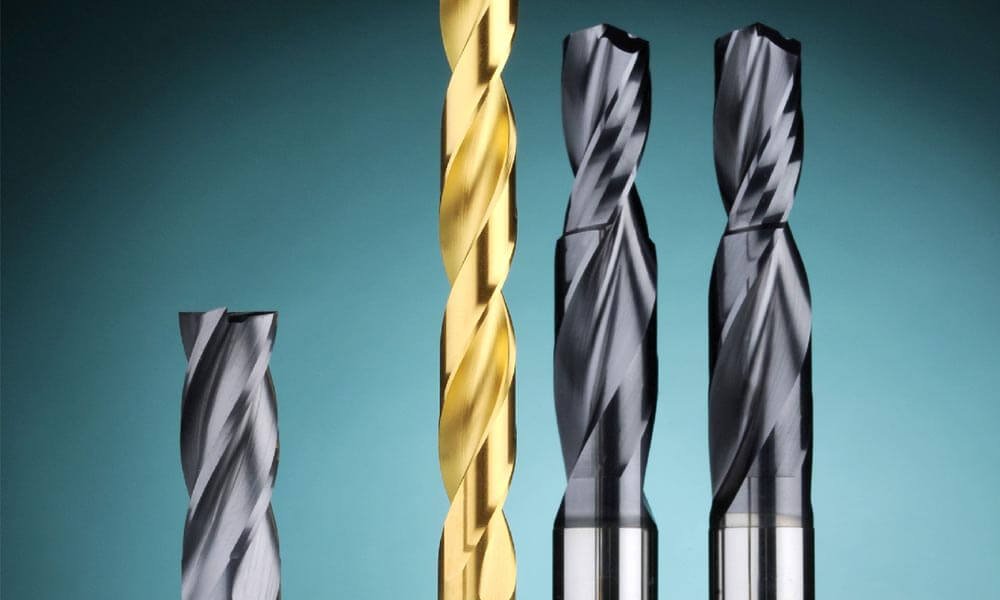Diamond-like carbon (DLC) coating
Diamond-like carbon (DLC) coating is one of the new tool coating materials. It uses low-pressure chemical vapor deposition technology to grow a layer of a diamond film composed of polycrystals on the cemented carbide substrate, and uses it to process non-ferrous metals such as silicon aluminum alloy and copper alloy, engineering materials such as glass fiber, and cemented carbide. After adding DLC coating on the surface, the service life of the tool is 50 to 100 times that of ordinary carbide tools.
DLC coatings use a number of diamond synthesis techniques, the most common of which are hot wire, microwave plasma and DC plasma jetting. By improving the coating method and the bonding of the coating, DLC-coated tools have been used in many industries.

DLC coatings have distinct advantages in machining certain materials, such as Al, Ti and their composites. The microstructure of DLC coatings deposited by low pressure vapor deposition is still quite different from that of natural diamond. In the 1990s, low pressure vapor deposition of DLC in the presence of activated hydrogen was often used, and the coating contained a large amount of hydrogen. Excessive hydrogen content will reduce the bonding force and hardness of the coating and increase the internal stress. The hydrogen in the DLC is slowly released at higher temperatures, causing the coating to work erratically.
The hardness of DLC without hydrogen is higher than that of DLC with hydrogen, and it has the advantages of uniform structure, large area deposition, low cost, and smooth surface. It has become a hot spot in DLC coating research in recent years.
Cubic Boron Nitride (CBN) Coating
CBN is another superhard material after synthetic diamond. In addition to having many excellent physical and chemical properties similar to diamond (such as ultra-high hardness, second only to diamond, high wear resistance, low friction coefficient, low In addition to thermal expansion coefficient, etc.), it also has some properties better than diamond.
When oxidized, CBN forms a thin layer of boron oxide, which provides chemical stability to the coating. CBN is chemically inert to iron, steel and oxidizing environments, so it has excellent heat resistance when machining hard iron and gray cast iron, and can also cut heat-resistant steel, hardened steel, and titanium alloys at relatively high cutting temperatures. etc., and can cut hard-to-machine materials such as chilled rolls with high hardness, carburizing and quenching materials, and silicon-aluminum alloys with very serious tool wear.
Since the successful preparation of pure CBN coating by Inagawa et al. in 1987, the research upsurge of CBN hard coating has been set off in the world. The methods of low-pressure gas phase synthesis of CBN coatings mainly include Chemical Vapor Deposition (CVD) and Physical Vapor Deposition (PVD) methods. CVD includes chemical transport PCVD, hot wire assisted heating PCVD, ECR-CVD, etc.; PVD includes reactive ion beam plating, active reactive evaporation, and laser evaporation ion beam assisted deposition. The research results show that progress has been made in the synthesis of CBN phase, good adhesion to cemented carbide substrate and suitable hardness. To achieve commercialization, reliable technology must be used to deposit a high-purity and economical CBN coating with a thickness of 3 to 5 μm, and its effect has been confirmed in actual metal cutting.
CNx Coating
In the 1980s, American scientists Liu and Cohen designed a new compound β-C3N4 similar to β-Si3N4. Using the theory of solid state physics and quantum chemistry, they calculated that its hardness may reach that of diamond, which has attracted the attention of scientists from all over the world. The carbon nitride coating obtained by Fujimoto of Okayama University in Japan by electron beam evaporation and ion beam assisted deposition method reaches 63.7 Gpa. The hardness of carbon nitride synthesized by Wuhan University reaches 50GPa respectively, and it is deposited on the high-speed steel twist drill to obtain very good drilling performance.
The main methods of synthesizing carbon nitride are true flow and radio frequency reactive sputtering, laser evaporation and ion beam assisted deposition ECR-CVD, double ion beam deposition and so on.


